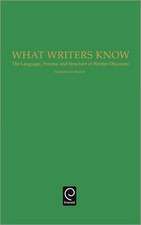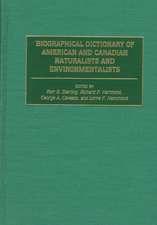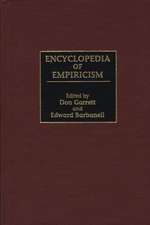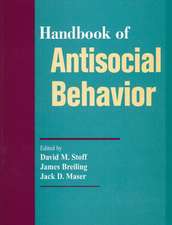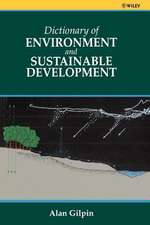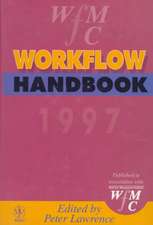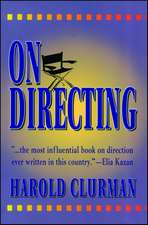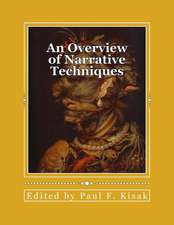What Counts as a Good Job in Teaching?
Autor Colleen Gilrane, Kristin Reardenen Limba Engleză Paperback – 18 iun 2015
| Toate formatele și edițiile | Preț | Express |
|---|---|---|
| Paperback (1) | 401.85 lei 6-8 săpt. | |
| Rowman & Littlefield – 18 iun 2015 | 401.85 lei 6-8 săpt. | |
| Hardback (1) | 634.73 lei 6-8 săpt. | |
| Rowman & Littlefield – 18 iun 2015 | 634.73 lei 6-8 săpt. |
Preț: 401.85 lei
Nou
Puncte Express: 603
Preț estimativ în valută:
76.89€ • 80.29$ • 63.50£
76.89€ • 80.29$ • 63.50£
Carte tipărită la comandă
Livrare economică 15-29 aprilie
Preluare comenzi: 021 569.72.76
Specificații
ISBN-13: 9781442234703
ISBN-10: 1442234709
Pagini: 180
Dimensiuni: 147 x 231 x 7 mm
Greutate: 0.3 kg
Editura: Rowman & Littlefield
ISBN-10: 1442234709
Pagini: 180
Dimensiuni: 147 x 231 x 7 mm
Greutate: 0.3 kg
Editura: Rowman & Littlefield
Notă biografică
Descriere
This book describes a successful approach to preservice teacher education that is designed to help prospective teachers develop the habits of mind for teaching for deeper understanding, even as their lived experiences as novice teachers conspire to encourage them to study for the test of the next day's evaluation rubric.
Cuprins
PRELUDE: THE CURRENT STATE OF U. S. TEACHER EVALUATION
Situating Preservice Teacher Education in the Chaos
PART I: THE UNDERGRADUATE PRE-INTERNSHIP MINOR Colleen P. Gilrane
CHAPTER 1: OVERVIEW
The Spring Block: Practicum and Teaching Methods
Planning the New and Improved Spring Block Getting Feedback and Fine-Tuning Did the Four Essential Questions Fit the Rubrics? Course Design
Implementing the Plan Course Organization Models of Effective Teaching (2 weeks) Who Are My Students? What Do I Want Them to Learn? (2 weeks) Assessment: What Would Count as a Good Job? (2 weeks) What Resources Are Available to Me? How Do I Organize Them to Support Learning? (3 weeks) Designing Your Learning Plans (5 weeks of Workshop Time)
Final Evaluation Conferences
CHAPTER 2: QUESTION #1: WHO ARE MY STUDENTS?
Who Are My Students: Candidates as Colleen's Kids What Do My Candidates Care About? What Kinds of Help Do My Candidates Need? Classroom/Course Structures Specific Strategies Responses My Candidates Need From Me How Do My Candidates Want/Need to Assessed? To Be Taught?
Who Are My Students: Candidates Watching Their Kids Addressing Diversity in our Friday Classes Conferences Addressing Diversity During Workshop Time Class Session Addressing Diversity as a Stand-Alone Topic
Who Are My Students: What Did Candidates Learn?
List of Readings Used for Diversity Class Session
CHAPTER 3: QUESTION #2: WHAT DO I WANT THEM TO LEARN?
Specific Supports for Thinking About Content Class Session Addressing Content as a Stand-Alone Topic The Understanding by Design Framework
What Do I Want Them to Learn: What Did Candidates Learn? Connecting Students to Content The Process of Identifying Content Worth Learning The Importance of Depth Over Coverage
CHAPTER 4: QUESTION #3: WHAT WOULD COUNT AS EVIDENCE OF LEARNING?
Learning About Assessment by Being Assessed Formative Assessment of My Candidates Summative Assessment of My Candidates Grades for the Friday portion of 422
Friday Class Sessions Devoted to Assessment as a Stand-Alone Topic Performance Assessment Formative Assessment
Designing Assessments for Learning Plans
What Would Count As Evidence: What Did Candidates Learn? Assessment Beyond Worksheets and Tests Bringing a Critical Lens to Current Practice Bringing Student Experiences to Bear on Designing Assessments as Teachers
CHAPTER 5: QUESTION #4: HOW DO I GET THERE?
Selecting Instructional Materials
Selecting Personnel Resources and Instructional Strategies
Making Decisions About Time, Space, Environment, and Pulling It All Together
How Do I Get There: What Did Candidates Learn? Expanded Awareness of Resources Time as a Resource Personnel as Resources
INTERLUDE: VOICES OF CANDIDATES
CHAPTER 6: HANNAH'S REFLECTION Hannah Louderback
Transitioning to Internship
First Year Teaching After Internship Teaching Science: Erosion Unit Teaching Math: Problems with Missing or Extra Information
Final Reflections
CHAPTER 7: JESSICA'S REFLECTION Jessica Covington
"Understanding" Across Differing Teaching Contexts Using Knowledge of Students to Set Goals and Evaluate Learning Setting Learning Goals Evaluating Learning
What Worked for Me: The W.H.E.R.E.T.O. Strategy Where Hook Equip Rethink and Revise self-Evaluation Tailor Organize
Final Reflections
PART II: THE GRADUATE INTERNSHIP YEAR Kristin T. Rearden
CHAPTER 8: GETTING STARTED: ORIENTING AND BUILDING RELATIONSHIPS
Preparing for the Field Experience: Setting up the Seminar Class Physical Design of the Seminar Classroom The Opening Class Session Preparing to Enter the Schools: First Impressions
The Field Experience The Spectrum of Classroom Environments Focal Point One: School Culture Focal Point Two: The Classroom Environment Focal Point Three: The Planning Process Focal Point Four: Instructional Strategies Focal Point Five: Assessment
Final Reflections
CHAPTER 9: FALL SEMESTER: OVERLAYING GOOD TEACHING WITH TEAM RUBRICS
Initial Weeks of the Internship Physical Space Considerations Establishing a Presence Assuming Responsibility for Planning, Teaching and Assessing
Developing Planning Skills Lesson Plans: Novice and Veteran Approaches Questions: At the Heart of Learning to Plan
Preparing for Formal Evaluations The ¿Dry Run¿ Evaluation The Lesson Plan: Intended Versus Implemented Areas to Improve and Areas of Strength Assessment Data Analyzing the Lesson with Evaluation Rubrics
The Initial Evaluation for State Licensure
CHAPTER 10: SPRING SEMESTER: OVERLAYING GOOD TEACHING WITH edTPA RUBRICS
Growing into their Roles as Teachers Leading, Not Soloing Viewing Themselves as Teachers Recognizing Beliefs About the Importance of Education
Theory into Practice: Action Research and Problem-Based Research Review
Blending the edTPA into Our Teacher Preparation Program Supporting the Interns During the edTPA Process Changes to the Program Evidence of Success
CODA: THE IMPORTANCE OF AN INQUIRY-BASED APPROACH
How Did Candidates Respond? TEAM Results edTPA Results Task 1 Planning Task 2 Instruction Task 3 Assessment edTPA Total Score and Cutoff Candidates' Reflections
Discussion


